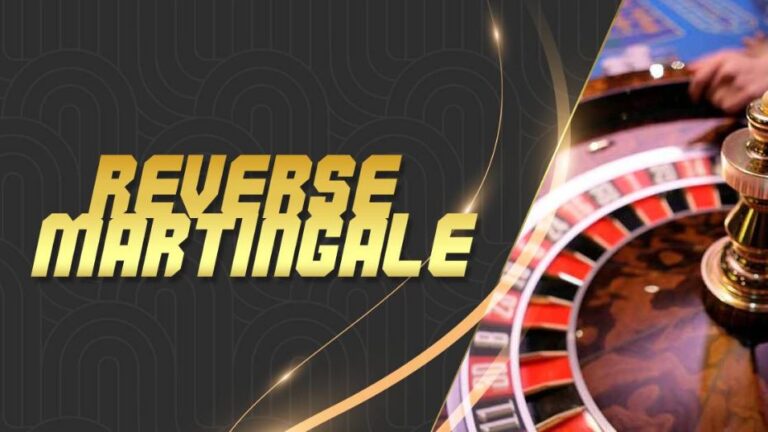D’Alembert Betting Strategy – Elevate Your Online Casino Game
The D’Alembert method offers a means to effectively manage your bankroll during gameplay in activities like baccarat, blackjack, and roulette. Tailored as a low-risk strategy, its purpose is to steadily accumulate modest victories while recovering from losses. In comparison to more aggressive approaches like the Martingale, the D’Alembert system adopts a less assertive stance, making it particularly suitable for certain types of players.

This comprehensive manual delves into the utilization of the D’Alembert betting system. Through illustrative examples, we elucidate how the strategy operates in real-world scenarios. Additionally, we highlight the specific games to which it can be applied and recommend optimal online casinos for those interested in experimenting with this approach.
Exploring the D’Alembert System in Gambling
The D’Alembert System stands out as a negative progression approach designed to guide individuals in determining their wagers during various casino games. This system is versatile, finding applicability in even chance bets, such as predicting red/black outcomes on the roulette wheel, choosing pass/don’t pass options in craps, opting for the player bet in baccarat, or participating in a hand at the blackjack table.

The methodology behind this betting System is refreshingly simple. After experiencing a loss, players are advised to increase the size of their subsequent bets, while after a victory, a decrease in the bet amount is recommended. The primary objective is to recover from previous losses while also accumulating multiple modest wins. This systematic approach adds an interesting dimension to the dynamics of popular casino games, offering players a strategic framework for their betting decisions.
Understanding the Mechanics of the D’Alembert System
When delving into the functionality of the D’Alembert System, the initial step involves the establishment of a bankroll, constituting the funds earmarked for a session at an offshore online casino. From this bankroll, a percentage is then designated as the base unit.

For instance, consider a scenario where your bankroll amounts to $1,000, and you opt to set your base unit at 2%, translating to $20. In this context, your initial bet for the chosen game would be a 1 unit wager amounting to $20.
The D’Alembert system operates on a straightforward principle: elevate your bet by 1 unit following a loss and decrease it by a unit after a win. The ensuing section illustrates the practical application of the D’Alembert approach.
| Bet Number | Bet Amount | Outcome | Total Profit/Loss |
| 1 | $10 | Loss | +$10 |
| 2 | $20 | Win | +$10 |
| 3 | $10 | Loss | 0 |
| 4 | $20 | Win | +$20 |
| 5 | $10 | Win | +$30 |
| 6 | $9 | Loss | +$21 |
| 7 | $10 | Win | +$31 |
| 8 | $9 | Win | +$40 |
Exploring the Advantages and Disadvantages of the D’Alembert System
Every betting system comes with its own set of merits and drawbacks. Here are the primary pros and cons to consider when adopting the D’Alembert strategy:

Pros
Cons
Utilizing the D’Alembert System in Roulette
The applicability of the D’Alembert System extends to any wager with two potential outcomes, where one faces either a loss or a win resulting in a doubled investment. These types of bets are commonly referred to as even money, even chance, or 1:1 bets. In the context of roulette, three primary options align with the D’Alembert System:

Among these, the red/black bet holds the status of being the most prevalent on a roulette wheel. To integrate the D’Alembert betting system into your roulette strategy, initiate the process by placing a 1-unit wager on red or black. Subsequently, elevate the bet by a unit following a loss, and persist in this pattern. Conversely, decrease the bet by a unit after a win. This systematic approach offers a strategic framework for managing bets in the dynamic realm of roulette.
Implementing the D’Alembert Betting System in Blackjack
Blackjack, renowned for its high Return to Player (RTP) rate exceeding 99%, stands as a favored table game for those exploring various betting systems. With outcomes in blackjack typically boiling down to either losing the bet or doubling your money, the D’Alembert system offers a straightforward method for determining wagers on each hand.

Initiating the process involves commencing with a single unit bet and subsequently adjusting based on wins or losses. While the situation may become more intricate when doubling down or splitting cards, the D’Alembert system adapts to these scenarios. If, for instance, you double down and experience a loss, a prudent move would be to increase your stake by 2 units. Conversely, if you win after doubling down, a reduction of 2 units in your bet is recommended. This adaptable approach also holds true in situations where cards are split, ensuring a systematic and strategic application of the D’Alembert system in the dynamic realm of blackjack.
Applying the D’Alembert System to Various Casino Games
The versatility of the D’Alembert System extends beyond roulette and blackjack, finding a compatible fit in other high Return to Player (RTP) games within the realm of online casinos. Baccarat, known for its elevated RTP, stands out as a prime candidate for the D’Alembert approach. Opting for the player bet in baccarat aligns well with the system, as it yields a doubled investment upon winning.

Craps, a game renowned for its compatibility with betting systems, proves conducive to the D’Alembert approach, particularly when focusing on bets such as pass/don’t pass or come/don’t come. While the system can be applied to basic, high RTP slots with minimal bonus features and low variance, its optimal performance is observed in the context of table games. The strategic application of the D’Alembert System across various casino games adds a layer of systematic decision-making to enhance the gaming experience.
FAQs
Conclusion
In conclusion, the D’Alembert Betting Strategy offers a balanced and systematic approach for managing bankrolls in casino games, with a focus on recovering from losses while accumulating modest wins. Its versatility across various games, simplicity, and appeal to players with different risk preferences make it an intriguing choice for those seeking a strategic framework in their online casino endeavors. While acknowledging its advantages, users should also be mindful of potential pitfalls, ensuring a thoughtful application of the D’Alembert System to enhance their gaming experience responsibly.






